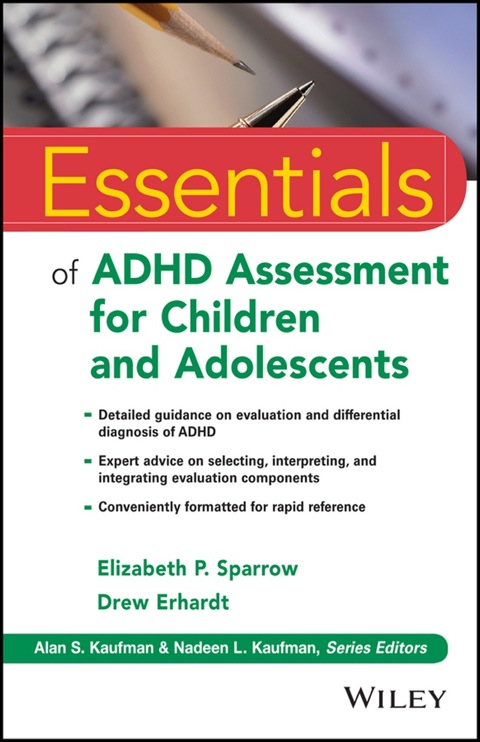Description
Efnisyfirlit
- Contents
- Foreword
- Series Preface
- Preface
- Acknowledgments
- One: Understanding ADHD
- Historical Perspective
- Overarching Principles
- Core Features
- Inattention
- Impulsivity
- Hyperactivity
- Associated Features and Comorbidity
- Cognitive and Academic
- Externalizing/Behavioral
- Internalizing/Emotional
- Interpersonal/Social
- Substance Use and Abuse
- Developmental and Medical
- Etiology
- ADHD Has Multiple Causes
- ADHD Is Neurobiological
- Factors That Change the Brain
- Genes
- Environmental Insults
- The Interplay of Genes and Experience
- Gene–Environment Interactions
- Epigenetics
- Epidemiology
- Prevalence
- Gender
- Culture
- Course and Outcome
- Summary
- Test Yourself
- References
- Two: What the DSM-5 Says About ADHD
- Organization of the DSM-5
- DSM-5 Criteria for ADHD
- Symptoms of DSM-5 ADHD
- Presentations of DSM-5 ADHD
- Persistence
- Age of Onset
- Pervasiveness
- Impairment
- Exclusions
- Severity
- Differential Diagnosis
- Comorbidity
- How Do I Know if It Is DSM-5 ADHD?
- Summary
- Test Yourself
- References
- Three: Assessing ADHD: Goals and Guiding Principles
- Goals
- Inclusion: Does the Child Meet Criteria for ADHD as Specified in DSM-5?
- Symptoms
- Pervasiveness
- Impairment
- Exclusion: If Current ADHD Criteria Are Met, Are There Credible Alternative Explanations for the Sym
- Guiding Principles
- Be Comprehensive
- Obtain Data from Multiple Informants, Settings, and Methods
- Multiple Informants and Settings
- Multiple Methods
- Integrate Categorical and Dimensional Approaches
- Be Sensitive to Developmental Factors
- Consider Culture and Other Contextual Factors
- Identify Strengths, Assets, and Competencies
- Adopt a Hypothesis-Testing Approach
- Summary
- Test Yourself
- References
- Four: Components of ADHD Assessment
- Sequence of Evaluation Components
- Record Review
- What Should I Review?
- When Should I Review Records?
- Interview
- What Should I Cover in My Interviews?
- Whom Should I Interview?
- Child Interview
- Parent/Caregiver Interview
- Teacher Interview
- Treatment Provider Interview
- Structured and Semi-structured Interviews
- When Should I Conduct Interviews?
- Clinical Observation
- What Should I Look For?
- When Should I Make Observations?
- Rating Scales
- How Do I Choose Rating Scales?
- When Should I Administer Rating Scales?
- Cognitive Testing
- What Areas/Skills Should I Test?
- When Should I Complete Testing?
- Summary
- Test Yourself
- References
- Five: Putting It All Together: Integrating Findings and Drawing Conclusions
- Clinical Application of the DSM-5 Criteria for ADHD
- Criterion A—Symptom Count: Are There Sufficient Symptoms for Diagnosis?
- Criterion B—Onset: Were Several Symptoms Present Before 12 Years of Age?
- Criterion C—Pervasiveness: Are Several Symptoms Present in at Least Two Settings?
- Criterion D—Impairment: Do Symptoms Interfere with or Reduce the Quality of Functioning?
- Criterion E—Exclusions: Are Symptoms Better Explained by Another Disorder?
- Differential Diagnosis and Comorbidity
- How Do I Discriminate ADHD from Other Disorders?
- Command of Child Psychopathology (Including But Not Limited to ADHD)
- Onset and Course
- Family History
- Response to Intervention (RTI)
- Common Diagnostic Challenges
- The So-Called “Normal” Condition
- Intellectual Disability (ID)
- Language Disorders
- Autism Spectrum Disorder
- Specific Learning Disorders
- Motor Disorders
- Psychotic Disorders
- Bipolar Disorders
- Depressive Disorders
- Anxiety Disorders
- Trauma- and Stressor-Related Disorders
- Disruptive, Impulse-Control, and Conduct Disorders
- Substance-Related Disorders
- Neurocognitive and Other Medical Conditions
- Other Possible Explanations
- Dealing with Discrepant Data
- Evaluating Reasons for Discrepancies
- Who Is Right?
- What Do I Do?
- Beyond Diagnosis
- Summary
- Test Yourself
- References
- Six: Illustrative Case Reports
- Psychological Evaluation
- EVALUATION PROCEDURES
- REASON FOR REFERRAL AND BACKGROUND
- Reason for Referral
- Background
- BEHAVIORAL OBSERVATIONS
- HOW TO READ THIS REPORT
- TEST RESULTS
- Attention
- Home Setting
- School Setting
- Clinic Setting
- Behavioral Screening
- Psychoeducational Assessment
- Intelligence
- Academic Achievement
- Cognitive Processes Related to Academic Functioning
- Phonological Processing
- Visual-Motor Integration
- IMPRESSIONS
- RECOMMENDATIONS
- Recommendations to Address Attention-Deficit/Hyperactivity Disorder
- General Suggestions
- Educational Setting
- Home Setting
- Suggestions to Address Oppositional Behaviors
- Recommendations to Address the Development of Reading and Spelling Skills
- Some Strategies to Assist Written Work
- Recommendations to Address Math Weaknesses
- Additional Suggestions to Address Behavioral Issues and Self-Concept
- ATTACHMENTS
- Wechsler Intelligence Scale for Children, Fourth Edition (WISC-IV)
- Woodcock-Johnson Psycho-Educational Battery, Third Edition, Tests of Achievement (WJ-III)
- Comprehensive Test of Phonological Processing (CTOPP)
- Developmental Test of Visual-Motor Integration (VMI)
- Formal Clinic Observation
- Conners Continuous Performance Test II V.5
- Conners, Third Edition
- ADHD Evaluation Report
- IDENTIFYING INFORMATION/REASON FOR REFERRAL
- PRESENTING PROBLEMS/CURRENT FUNCTIONING
- BACKGROUND INFORMATION
- PREVIOUS TESTING AND INTERVENTIONS
- TESTS AND PROCEDURES ADMINISTERED
- BEHAVIOR OBSERVATIONS/MENTAL STATUS
- RESULTS OF ADHD BATTERY
- Interview Data
- Symptom Rating Scales
- Continuous Performance Test (CPT)
- Diagnostic Screening
- SUMMARY AND CONCLUSIONS
- DIAGNOSIS
- RECOMMENDATIONS
- Medication trial
- Educational interventions and accommodations
- Psychoeducational evaluation
- Support, information, and advocacy groups
- Continue individual therapy
- Neuropsychological Evaluation
- REASON FOR REFERRAL
- KEY BACKGROUND INFORMATION
- VALIDITY
- TEST RESULTS
- INTERPRETATION OF RESULTS
- Medication Monitoring Results
- OVERALL IMPRESSIONS
- RECOMMENDATIONS
- REFERRALS
- Annotated Bibliography
- About the Authors
- Index






Reviews
There are no reviews yet.